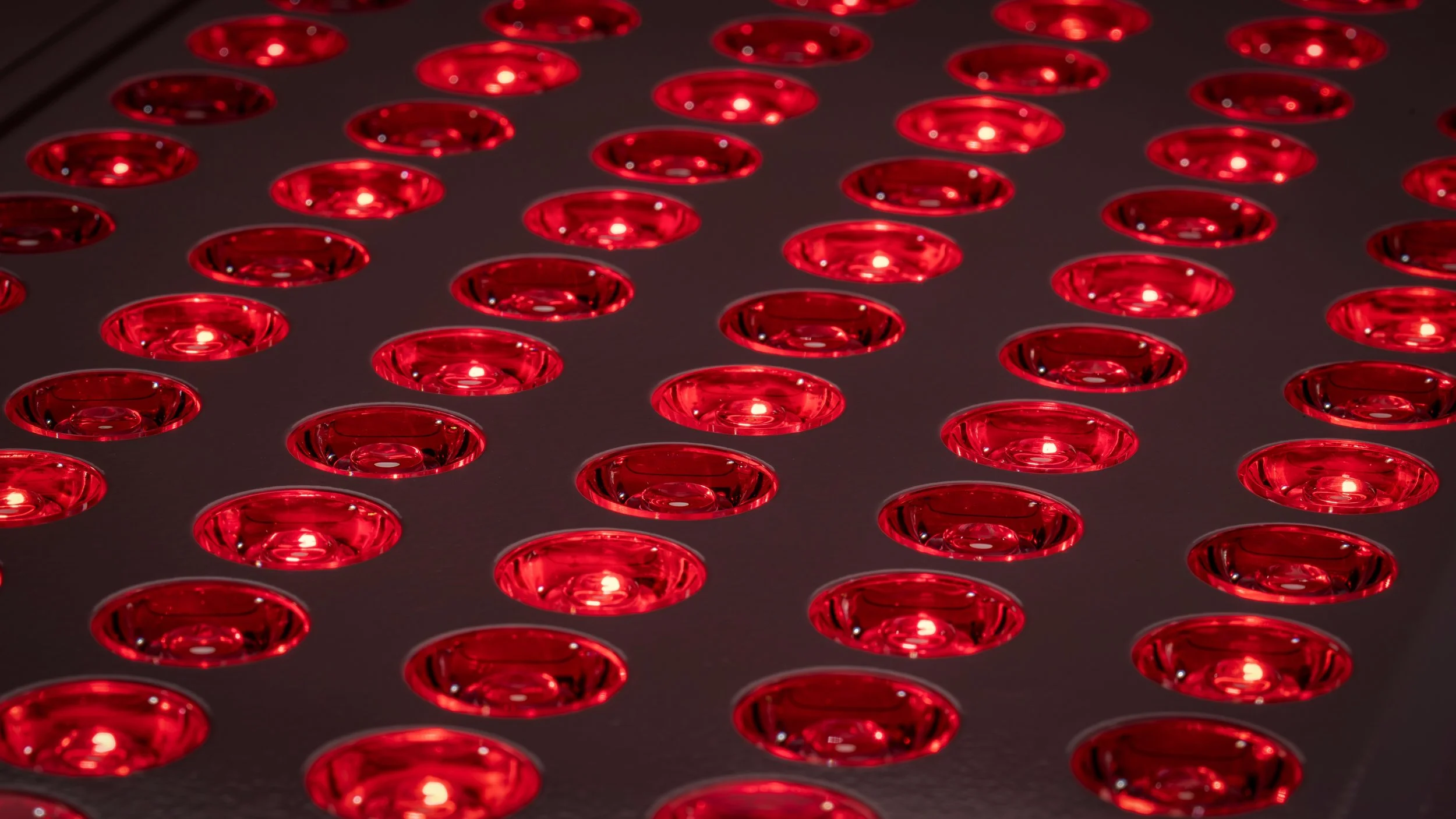Red Light Therapy
What is it?
Benefits:
History:
Reasons to Avoid RLT:
Get Ready For Your 1st RLT Session:
Red light therapy (RLT) is a specific wavelength of red & near-infrared light applied to targeted areas of the body. Scientifically, Red Light Therapy is also known as Photobiomodulation Therapy, or PBMT for short!
The light feels like a gentle, diffuse form of warmth similar to that of relaxing with the perfect temperature at the beach. In addition to it’s well researched medical benefits, it’s calming for the mind, soothing on the areas that receive its’ light on the body and overall, deeply restorative.
RLT benefits the body’s natural healing processes. When the light is absorbed by your skin and cells, it encourages increased energy production, reduces inflammation, and supports tissue regeneration. At Sore Spots, we use a professional-grade Kala Red Light system—designed for deep tissue penetration and optimized for clinical results.
Red Light Therapy has been studied for its wide range of therapeutic effects. Clients use it for:
Pain relief: Helps reduce joint and muscle pain, stiffness, and inflammation.
Accelerated healing: Supports recovery from injuries, surgery, and intense workouts.
Improved skin health: Reduces signs of aging, scars, acne, and supports collagen production.
Mood & energy boost: Can improve sleep, reduce fatigue, and enhance mood by regulating circadian rhythms.
Increased circulation: Enhances blood flow, which nourishes tissues and accelerates healing.
Whether you’re recovering from an injury, dealing with chronic pain, or just want to boost your body’s natural wellness systems—Red Light Therapy can be a powerful complement to your self-care routine.
Red Light Therapy was first developed by NASA in the 1990s to help astronauts heal wounds and maintain muscle and bone mass in space. Since then, it has gained popularity in medical, sports, and wellness communities for its restorative properties. Over the past two decades, RLT has been widely researched and adopted in physical therapy clinics, dermatology offices, and wellness centers worldwide.
Jaber, J. M. et al. (2025)
NASA’s Impact on Medical Innovation: Breakthrough Technologies from Space Research
A recent review describing downstream impacts of NASA’s innovations, including red light and biophotonics. 🔗 ScienceDirect HTML
· Cotler, H. B. (2015)
A NASA discovery has current applications in orthopaedics
Reviews how NASA’s RLT transitioned into orthopedic use to reduce inflammation and accelerate healing. 🔗 Journal PDF
· Whelan, H. T. et al. (2003)
Effect of NASA LED irradiation on diabetic wound healing
Molecular-level analysis showing gene expression changes in diabetic mice post RLT, highlighting accelerated healing. 🔗 Academia.edu PDF
Coulter, A. H. (2003)
Let There Be Light — and Healing
A reflective summary on early skepticism about RLT and its later validation through NASA-funded studies.🔗 Liebert PDF
While RLT is generally safe and well-tolerated, it’s not suitable for everyone. Please consult your doctor and inform our team if any of the following apply:
You are pregnant or breastfeeding
You have a history of photosensitivity or are taking medications that increase light sensitivity (e.g. certain antibiotics, retinoids)
You have an active cancer diagnosis or are undergoing cancer treatments
You have epilepsy or a history of seizures triggered by light
You have open wounds or severe skin conditions in the area being treated
If you're unsure, we’re happy to walk through any concerns with you before your session.
Ways to Prep for Your First Red Light Treatment:
Stay hydrated: Water supports your cells’ ability to absorb light and detoxify afterward.
Avoid lotion or oils on the skin: Come with clean, bare skin for best light penetration, especially if you plan to receive RLT on your face. If you can not do this for your face before your appointment, please come early to wash your face before your appointment.
Arrive early: Take a few moments to relax and get oriented before your appointment.
Set an intention: Whether it’s healing, recovery, or relaxation, tuning into your body helps enhance the treatment’s effects.





